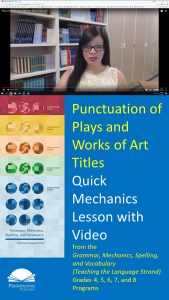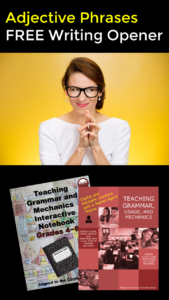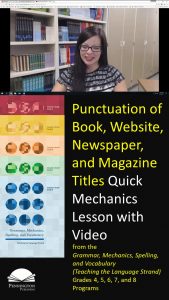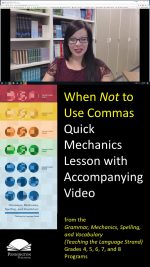Predicate Adjectives
Predicate Adjectives
Play the quick video lesson HERE and click the upper left back arrow to return to this lesson.
Common Core Language Standard 1
Each part of speech, such as adjectives, takes plenty of different forms in our speaking and writing sentence structure. Because adjectives modify nouns and pronouns, this means that they also modify the way nouns and pronouns are used in sentences, such as subjects which act and objects which receive the action.
Today’s grammar and usage lesson is on predicate adjectives and adjectival phrases. Remember that an adjective modifies a noun or pronoun and answers Which one? How many? or What kind? A linking verb describes or renames the subject.
Now let’s read the grammar and usage lesson and study the examples.
An adjective that follows a linking verb to describe a preceding noun or pronoun is called a predicate adjective. Example: Mark is nice and he looks good. Because the predicate adjective serves as an object, it often has modifiers.Example: Joe was very cool.
Now circle or highlight what is right and revise what is wrong according to grammar and usage lesson.
Practice: Their year-end final exams were difficulter, but most were manageable.
Let’s check the Practice Answers.
Grammar and Usage Practice Answers: Their year-end final exams were difficulter, but most were manageable.
Now let’s apply what we have learned.
Writing Application: Write your own sentence using predicate adjective as part of an adjectival phrase.
*****

Pennington Publishing Grammar Programs
Teaching Grammar, Usage, and Mechanics (Grades 4, 5, 6, 7, 8, and High School) are full-year, traditional, grade-level grammar, usage, and mechanics programs with plenty of remedial practice to help students catch up while they keep up with grade-level standards. Twice-per-week, 30-minute, no prep lessons in print or interactive Google slides with a fun secret agent theme. Simple sentence diagrams, mentor texts, video lessons, sentence dictations. Plenty of practice in the writing context. Includes biweekly tests and a final exam.
Grammar, Usage, and Mechanics Interactive Notebook (Grades 4‒8) is a full-year, no prep interactive notebook without all the mess. Twice-per-week, 30-minute, no prep grammar, usage, and mechanics lessons, formatted in Cornell Notes with cartoon response, writing application, 3D graphic organizers (easy cut and paste foldables), and great resource links. No need to create a teacher INB for student make-up work—it’s done for you! Plus, get remedial worksheets, biweekly tests, and a final exam.
Syntax in Reading and Writing is a function-based, sentence level syntax program, designed to build reading comprehension and increase writing sophistication. The 18 parts of speech, phrases, and clauses lessons are each leveled from basic (elementary) to advanced (middle and high school) and feature 5 lesson components (10–15 minutes each): 1. Learn It! 2. Identify It! 3. Explain It! (analysis of challenging sentences) 4. Revise It! (kernel sentences, sentence expansion, syntactic manipulation) 5. Create It! (Short writing application with the syntactic focus in different genre).
Get the Diagnostic Grammar, Usage, and Mechanics Assessments, Matrix, and Final Exam FREE Resource:
![]()








